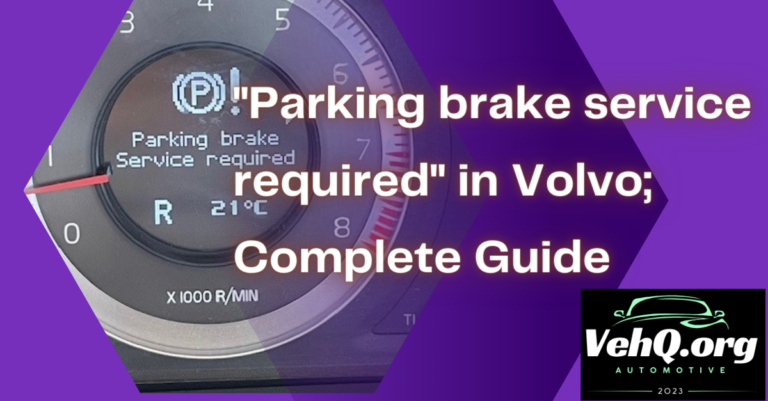Driving with a bad catalytic converter can lead to a host of issues, from reduced vehicle performance to legal troubles. Understanding the role of this critical component and the risks associated with its malfunction is essential for every car owner.
This comprehensive guide delves into whether it’s safe to drive with a faulty catalytic converter and what you should do if yours fails.
What Is a Catalytic Converter?
A catalytic converter is an essential component of a vehicle’s exhaust system. Its primary function is to reduce harmful emissions by converting toxic gases and pollutants from the engine into less harmful substances before they are released into the atmosphere.
Typically located between the engine and the muffler, the catalytic converter contains catalysts like platinum, palladium, and rhodium, which facilitate chemical reactions that transform pollutants such as carbon monoxide, nitrogen oxides, and hydrocarbons into carbon dioxide, nitrogen, and water vapor.
The catalytic converter not only helps in reducing environmental pollution but also ensures that the vehicle complies with emission standards set by regulatory bodies. Failure of this component can lead to increased emissions, decreased fuel efficiency, and potential legal issues.
Signs of a Bad Catalytic Converter
Recognizing the symptoms of a failing catalytic converter can help prevent further damage to your vehicle. Here are some common signs to watch out for:
Decreased Engine Performance
A clogged or damaged catalytic converter can restrict exhaust flow, leading to reduced engine performance. You might notice a lack of acceleration, poor fuel economy, or difficulty maintaining high speeds. This happens because the engine has to work harder to push exhaust gases through the clogged converter.
Check Engine Light
One of the most apparent indicators of a problem is the illumination of the check engine light on your dashboard. Modern vehicles are equipped with sensors that monitor the efficiency of the catalytic converter.
If the converter is not functioning correctly, the sensors will trigger the check engine light. It’s essential to have the vehicle scanned for diagnostic trouble codes (DTCs) to pinpoint the issue.
Unusual Smells
A failing catalytic converter can produce a distinct rotten egg or sulfuric smell. This odor results from the converter’s inability to process hydrogen sulfide in the exhaust into sulfur dioxide. If you detect such a smell, it’s advisable to have your vehicle inspected promptly.
Rattling Noises
Over time, the internal components of the catalytic converter can degrade, leading to breakage. This deterioration can cause a rattling noise, especially during startup or acceleration. Hearing such noises is a clear sign that the converter may be damaged and requires attention.
Causes of Catalytic Converter Failure
Understanding what leads to catalytic converter failure can help in preventing such issues. Several factors can contribute to its malfunction:
Engine Performance Problems
Issues like misfiring spark plugs, faulty oxygen sensors, or improper fuel mixture can lead to unburned fuel entering the catalytic converter. This unburned fuel can overheat the converter, causing damage to its internal components.
Contamination
Using leaded gasoline or certain fuel additives can contaminate the catalytic converter, rendering it ineffective. It’s crucial to use the recommended fuel type and avoid additives that can harm the exhaust system.
Physical Damage
External impacts, such as driving over road debris or potholes, can physically damage the catalytic converter. Dents or cracks can impair its functionality, leading to inefficiencies.
Age and Wear
Like all vehicle components, catalytic converters have a lifespan. Over time, the catalysts can degrade, reducing their effectiveness. Regular vehicle maintenance can help in extending the life of the converter.
Is It Safe to Drive with a Bad Catalytic Converter?
While a vehicle can technically operate with a malfunctioning catalytic converter, doing so is not advisable. Here’s why:
Performance Issues
A bad catalytic converter can lead to reduced engine performance, making driving less safe and enjoyable. Issues like stalling, poor acceleration, and decreased fuel efficiency can arise, compromising the vehicle’s reliability.
Potential for Further Damage
Continuing to drive with a faulty converter can lead to more severe problems. For instance, excessive backpressure from a clogged converter can cause engine overheating or damage other exhaust system components.
Legal Implications
Many regions have strict emission standards. Driving with a malfunctioning catalytic converter can result in your vehicle failing emission tests, leading to fines or inability to register your car.
Environmental Concerns
A bad catalytic converter increases the release of harmful pollutants into the environment. This not only contributes to environmental degradation but also poses health risks to the public.
Legal Implications of Driving with a Faulty Catalytic Converter
Emissions regulations are in place to ensure vehicles do not release excessive pollutants. Operating a vehicle with a defective catalytic converter can have legal consequences:
Emission Testing Failures
In many areas, vehicles must pass periodic emissions tests. A failing catalytic converter can cause your car to emit pollutants above the permissible limits, leading to test failures. This can prevent you from renewing your vehicle registration.
Fines and Penalties
Some jurisdictions impose fines for vehicles that do not meet emission standards. Repeated violations can lead to increased penalties or even impoundment of the vehicle.
Liability Concerns
In the event of an accident, operating a vehicle that does not comply with legal standards can complicate insurance claims or lead to liability issues.
Environmental Impact of a Bad Catalytic Converter
The primary purpose of a catalytic converter is to reduce harmful emissions. When it fails, the environmental repercussions are significant:
Increased Pollutants
A malfunctioning converter allows higher levels of carbon monoxide, nitrogen oxides, and hydrocarbons to be released into the atmosphere. These pollutants contribute to smog formation, respiratory issues, and environmental degradation.
Greenhouse Gas Emissions
While the catalytic converter primarily targets toxic pollutants, its failure can indirectly lead to increased carbon dioxide emissions due to reduced fuel efficiency. This exacerbates global warming concerns.
How to Diagnose a Bad Catalytic Converter
Proper diagnosis is crucial to confirm if the catalytic converter is at fault. Here’s how professionals approach it:
On-Board Diagnostics (OBD-II) Scanning
Modern vehicles are equipped with OBD-II systems that store diagnostic trouble codes. Using a scanner, technicians can retrieve these codes to determine if there’s an issue with the catalytic converter or related components.
Temperature Testing
A functioning catalytic converter will have a higher outlet temperature compared to its inlet due to the chemical reactions taking place. Using infrared thermometers, technicians can measure these temperatures. A negligible temperature difference indicates a faulty converter.
Backpressure Testing
Excessive backpressure in the exhaust system can be a sign of a clogged catalytic converter. Specialized tools measure the pressure before and after the converter to assess its condition.
Physical Inspection
Inspecting the catalytic converter for physical damage, such as dents or discoloration, can provide insights into its health. Rattling noises upon tapping can indicate internal damage.
Repair and Replacement Options
Once diagnosed, addressing a bad catalytic converter is essential:
Cleaning the Converter
In some cases, especially with minor clogging, cleaning the catalytic converter can restore its functionality. This involves using specialized cleaning agents that remove deposits without damaging the internal catalysts.
Replacement
If the converter is severely damaged or contaminated, replacement is the only viable option. It’s crucial to use high-quality, compliant converters to ensure proper functioning and adherence to emission standards.
Addressing Underlying Issues
Often, issues like engine misfires or faulty sensors lead to catalytic converter damage. Before replacing the converter, it’s essential to fix these underlying problems to prevent recurrence.
Cost Considerations
Replacing a catalytic converter can be expensive due to the precious metals it contains:
- Replacement Costs
Depending on the vehicle make, model, and converter type, replacement costs can range from $500 to over $2,500, including parts and labor.
- Potential Savings
While the upfront cost is significant, replacing a faulty converter can lead to savings in fuel efficiency, reduced risk of further vehicle damage, and avoidance of legal penalties.
Preventive Maintenance
Regular maintenance can extend the life of your catalytic converter:
- Regular Engine Tune-Ups
Ensuring that spark plugs, oxygen sensors, and other engine components function correctly prevents unburned fuel from damaging the converter.
- Using Quality Fuel
Avoiding contaminated or leaded fuels ensures the converter remains uncontaminated.
- Prompt Repairs
Addressing issues like engine misfires or sensor failures promptly can prevent damage to the catalytic converter.
Conclusion
Driving with a bad catalytic converter is not advisable due to the myriad of risks involved. From decreased vehicle performance and potential engine damage to legal and environmental concerns, the downsides are significant. Regular vehicle maintenance, prompt attention to issues, and understanding the signs of a failing converter can help ensure your vehicle remains compliant, efficient, and environmentally friendly.
FAQs
How long can I drive with a bad catalytic converter?
While it’s possible to drive for a short period with a failing converter, it’s not recommended. Prolonged driving can lead to engine damage, legal issues, and increased environmental harm.
Can a bad catalytic converter damage my engine?
Yes, a clogged converter can cause excessive backpressure, leading to engine overheating, reduced performance, and potential internal damage.
Is it illegal to remove the catalytic converter?
In many jurisdictions, removing or tampering with the catalytic converter is illegal due to emission regulations. Doing so can result in fines and other legal consequences.
Does using fuel additives help clean the catalytic converter?
Some fuel additives claim to clean the catalytic converter. While they might offer minor benefits, they are not a substitute for proper maintenance or professional cleaning.
How often should the catalytic converter be replaced?
Catalytic converters are designed to last the lifetime of the vehicle, typically around 100,000 miles. However, factors like driving conditions, maintenance, and fuel quality can influence their lifespan.




One Comment